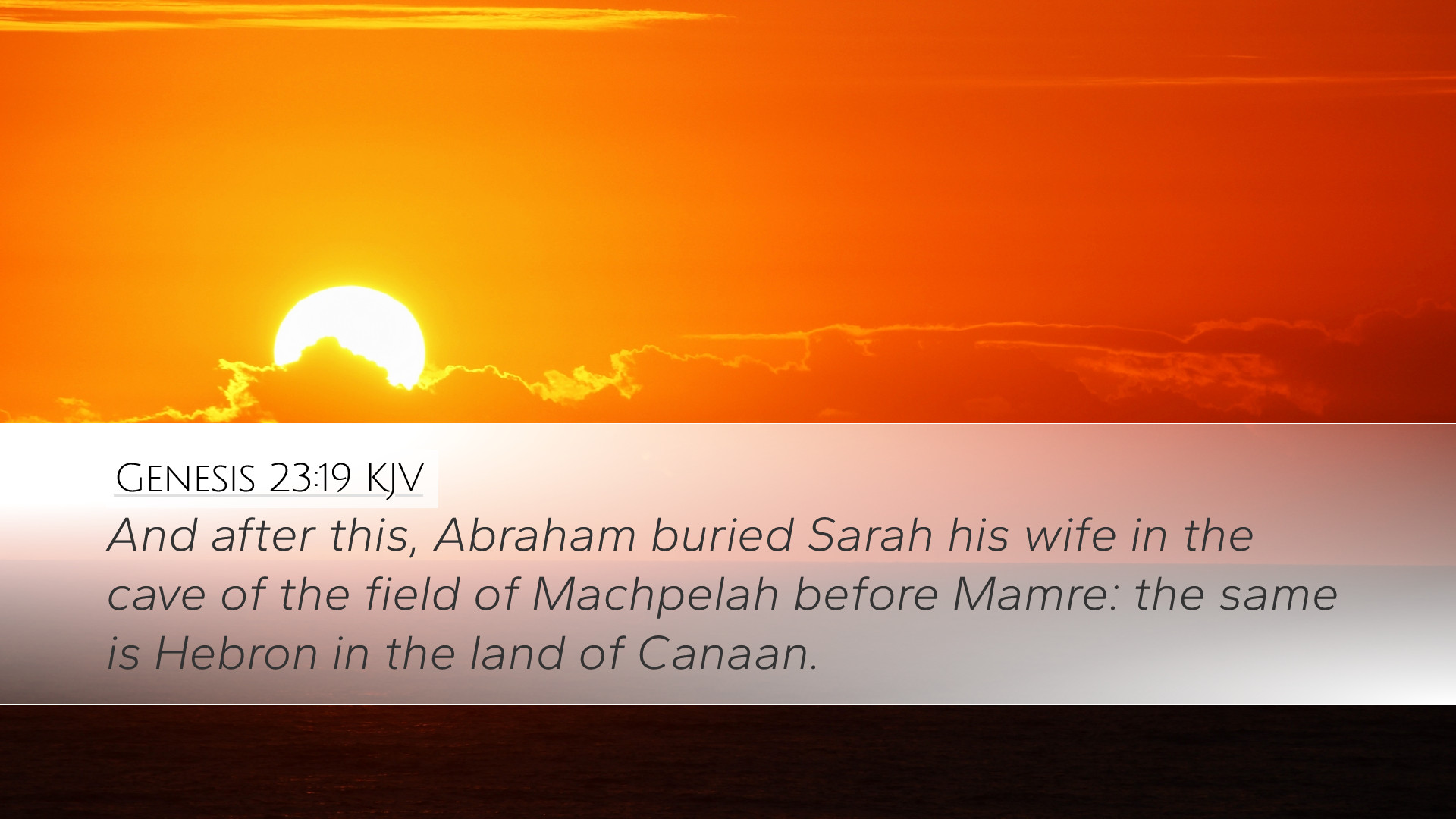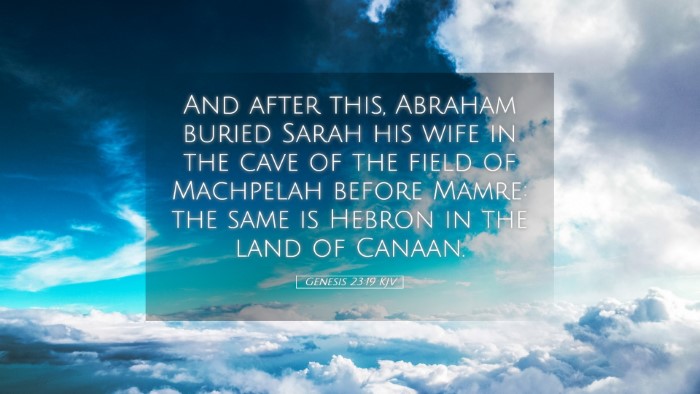Commentary on Genesis 23:19
Bible Verse: "And after this, Abraham buried Sarah his wife in the cave of the field of Machpelah, before Mamre: the same is Hebron in the land of Canaan."
Introduction
Genesis 23:19 marks a significant moment in the narrative of Genesis, as it details the burial of Sarah, the wife of Abraham. This act not only concludes the life of Sarah but also signifies Abraham's relationship with the Promised Land. The cultural and theological implications embedded in this verse offer rich insights for pastors, students, theologians, and Bible scholars.
Contextual Background
To comprehend the depth of Genesis 23:19, it is essential to acknowledge the broader context of Abraham's journey. Abraham, initially called from Ur of the Chaldeans, was promised by God that his descendants would inherit the land of Canaan. However, throughout his life, he faced numerous challenges, including conflicts over land and deeper existential struggles regarding faith and promise.
Commentary Insights
Abraham and Sarah’s Relationship
This text serves as a poignant reminder of Abraham’s deep love and respect for Sarah. As Matthew Henry remarks, the act of burial is imbued with mourning and honor. Abraham's choice to bury his wife reflects his heart and commitment to her, as well as recognition of their shared life and faith journey.
The Significance of Machpelah
The cave of Machpelah holds historical significance in Jewish lineage, as it becomes the first piece of land that Abraham owns in Canaan, symbolizing the beginning of the fulfillment of God's promises regarding the land. Albert Barnes emphasizes that the acquisition of this site signifies faith, as Abraham, though a sojourner, acts as if the land belongs to him and his descendants.
Hebron as a Place Name
The mention of Hebron in the context of this verse also bears significance. Known as a place of community and being one of the oldest continuous habitations, it reflects a sense of permanence amidst the transient nature of Abraham's journey. Adam Clarke notes the transformation of places within the Biblical narrative, highlighting how locations embody both personal and communal memories.
Theological Reflections
From a theological standpoint, Genesis 23:19 represents notions of loss, grief, and hope in the future promise. Abraham’s decision to bury Sarah within the Promised Land serves not just as closure for their earthly relationship but also as an expression of faith in the future resurrection—the ultimate fulfillment of God's promises.
The Importance of Burial Practices
The burial is a potent symbol in Hebrew culture, often filled with layers of spiritual significance. As reflected in Matthew Henry’s commentary, burial rites were characterized by respect, dignity, and community involvement. The act serves not only as a means of honoring the dead but also points to the community's shared values and beliefs about life and death.
Legacy of Faith
Abraham’s act of burying Sarah is a testament to his faith in God’s promises. It is fundamental for pastors and theologians to recognize that death for the faithful is not the end; rather, it opens the path to eternal life. The act of funeral and burial rituals can facilitate the communal expression of grief while reinforcing the hope of resurrection, much like the Scriptures suggest.
Lessons for Today
As contemporary readers engage with Genesis 23:19, several pertinent lessons can be derived:
- Value of Relationships: The verse emphasizes the importance of honoring our loved ones in life and death.
- Faith in God’s Promises: Abraham’s faithfulness in the act of burial illustrates a lived trust in God’s promises, a call to believers today to walk in faith.
- Cultural Significance of Burial: Understanding the cultural implications of burial practices can enrich our approach to pastoral care and ritual significance in our communities.
- Hope of Resurrection: This passage prompts a reflection on the Christian hope in the resurrection and eternal life through faith.
Conclusion
Genesis 23:19 is more than a simple account of a burial; it is a narrative rich with emotional, cultural, and theological significance. It encourages deeper reflection on love, loss, faithfulness, and the promises of God. As we engage with this rich text, may we be reminded of the legacy of faith that continues through generations, grounded in the hope of resurrection and eternal life.


